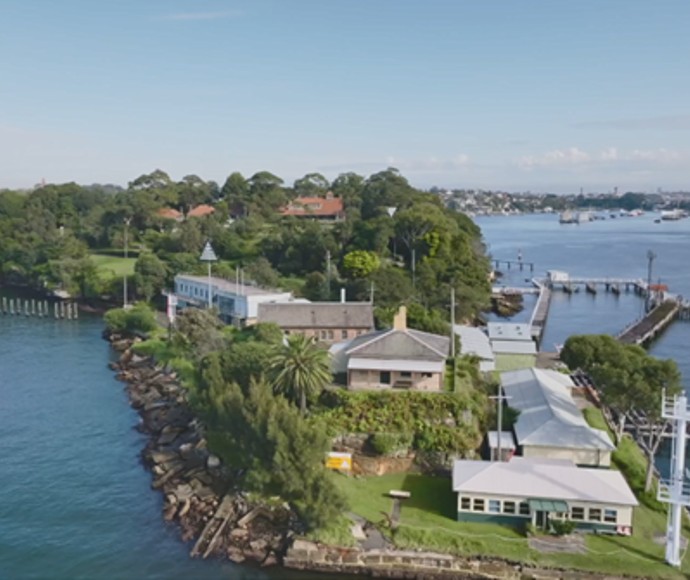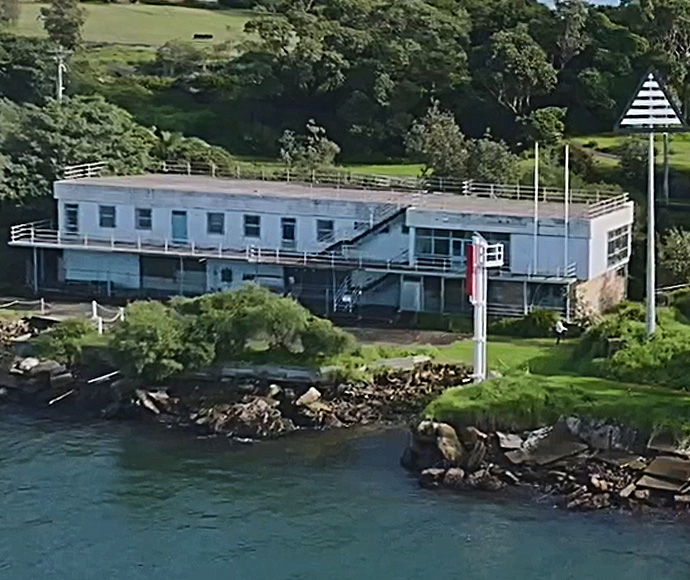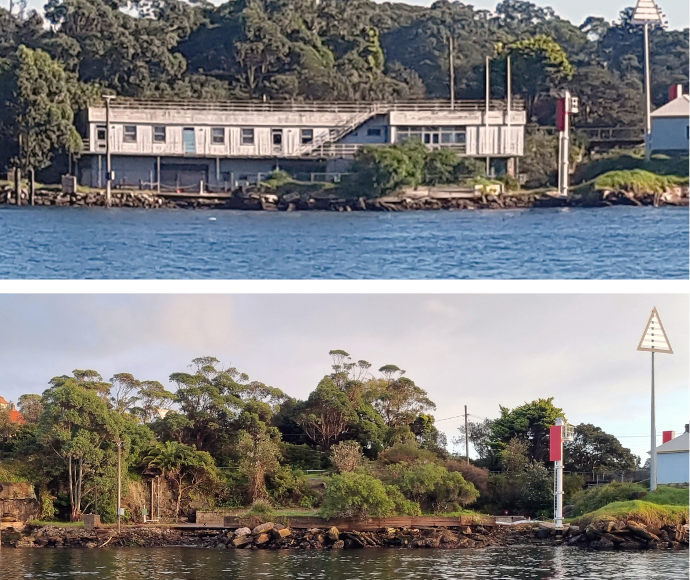Me-Mel Goat Island is of exceptional heritage significance and is deeply connected to Sydney's history.
In the 18th century, the island was associated with Bennelong; in the 19th century it was associated with Australia's convict and military history and in the 20th century the island was a key part of Sydney Harbour's maritime operations. These phases of history are reflected in the natural and built environment of the island.

Remediation and conservation program
The NSW Government has committed $42.9 million for remediation, conservation, and upgrade works at Me-Mel to support the island's transfer to Aboriginal ownership and management.
Progress of remediation
NSW National Parks and Wildlife Service has completed the following repair and remediation works to date:
- demolition of the condemned and dilapidated timber ferry wharf
- repair of the small boat pens
- removal of the former Port Emergency Services amenities building
Over the next 12 months the National Parks and Wildlife Service will:
- repair the boatshed
- replace the bridge over The Cut (there will be no visitor access past the bridge for 3 to 4 months)
- replace damaged slate tiles on the barracks, powder magazine and cooperage
- carry out sandstone conservation works to the sentry wall and the interior of the powder magazine
- replace and extend the northern broadside wharf and repair the seawalls
- remove a small redundant amenities building
- remediate contaminated soil in the South Depot and North Depot precincts
- repair the Water Police Building, 1865 Cottage and 1912 Barracks.
Old ferry wharf
The old timber ferry wharf was unsafe and could not be used or economically repaired. Marine biologists inspected the ferry wharf piles and determined that no significant marine species would be affected by the removal of the wharf piles.

Port Emergency Services building
The former Port Emergency Services amenities building, of moderate heritage significance, was dilapidated, unsafe and unable to be used. The original construction utilised lightweight, economical materials which are now in poor condition. More recent alterations made to the building in the 1990s were intrusive and not long-lasting, and the stairs and balustrades did not comply with current safety or engineering standards.

The building obscured visual appreciation of the north-eastern foreshore and the significant cut through the island, which convicts carved out to separate the water police building from the rest of the island.
The Heritage Council of NSW approved the removal of the building, and the process has been completed now. Areas of contaminated soil around the building will now be remediated.

Barneys Cut Bridge
In 1835, the colonial government requested approval to establish a water police station on Goat Island, as this was a strategic location for responding to escaped convicts and smuggling. Ordnance engineer George Barney deployed a convict iron gang to excavate a channel to separate the main island from the water police station on the north-eastern tip. The superior quality stone extracted from this process was used to construct the water police station.
When the water police relocated from Goat Island in 1865, a bridge was built over the channel and has been replaced several times.
The steel beams have extensive corrosion, the abutments have been damaged by tree roots and the bridge balustrades do not meet current safety standards. The bridge will be replaced.

Managing the island's heritage
All repair and remediation works are subject to assessments of impact and supported by the Goat Island conservation management plan.
All works on the island not covered by standard or site-specific exemptions require approval under the Heritage Act 1977.

